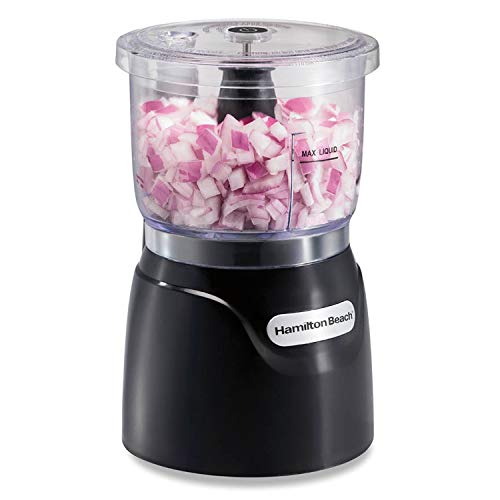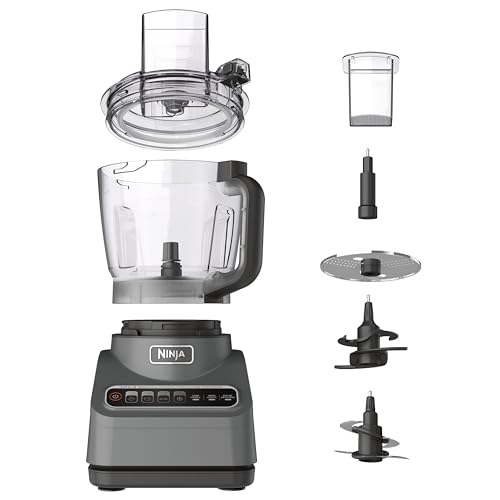Welcome to the world of homemade mayonnaise! In this step-by-step guide, we’ll show you how to make delicious mayonnaise using a food processor. Whether you’re a culinary enthusiast or just looking to elevate your sandwich game, this guide is here to help you create creamy, tangy mayo from scratch. Get ready to impress your taste buds!
Table of Contents
Top-rated kitchen gadgets for food prep
Gather the ingredients and equipment
To start making your delicious homemade mayonnaise, you will need to gather the necessary ingredients:
- Egg yolks: You will need a couple of fresh egg yolks to give the mayonnaise its creamy texture and richness.
- Lemon juice: A tablespoon or two of freshly squeezed lemon juice will add a tangy flavor to your mayonnaise.
- Mustard: A teaspoon of mustard, whether Dijon or yellow, will help emulsify the ingredients and give the mayo a hint of zing.
- Salt: A pinch of salt will enhance the overall taste of your mayonnaise, so make sure to have it on hand.
- Vegetable oil: You’ll need a neutral tasting oil, such as vegetable or canola oil, to provide the base for your mayonnaise.
Besides the ingredients, there are a few essential pieces of equipment you’ll need to have ready:
- Food processor: A food processor will make the emulsification process quick and easy. If you don’t have one, a blender can also work.
- Measuring cups: Make sure you have measuring cups for precise measurements of your ingredients.
- Spatula: A spatula will be handy for scraping down the sides of the food processor and ensuring all the ingredients are well incorporated.
Now that you have gathered all the necessary ingredients and equipment, you are ready to move on to the next steps of making your homemade mayonnaise. Enjoy the process and get ready for a tasty outcome!
Combine the egg yolks, lemon juice, and mustard
To begin, place the egg yolks, lemon juice, and mustard in the bowl of your food processor. Make sure you have all the ingredients measured and ready to go. For example, crack open the eggs and carefully separate the yolks from the whites, ensuring that no traces of egg white remain. Squeeze fresh lemon juice into a separate container, making sure to remove any seeds. Measure out the appropriate amount of mustard, whether it be Dijon, yellow, or any other variety you prefer.
Once you have all the ingredients in the food processor bowl, it’s time to blend them together. Secure the lid of the food processor and set it to a low speed. This will ensure that the ingredients are mixed thoroughly and evenly. Let the food processor run for about 30 seconds to a minute, or until you have a smooth and well-combined mixture. You can check the consistency by stopping the food processor and scraping down the sides of the bowl with a spatula. If there are any lumps or unmixed portions, continue processing until everything is fully incorporated.
Remember, using a food processor makes this step quick and effortless. It ensures that the egg yolks, lemon juice, and mustard are perfectly combined, creating a smooth and creamy base for your recipe. So, take a moment to gather your ingredients, place them in the food processor bowl, and let the machine do the work for you.
Slowly drizzle in the oil
While the food processor is running, slowly pour the vegetable oil into the bowl in a steady stream. This ensures that the oil is incorporated gradually into the other ingredients, allowing them to emulsify properly. The key here is to maintain a consistent and slow drizzle rather than dumping the oil all at once. This controlled pouring technique helps to create a smooth texture and prevent the mayonnaise from separating.
To achieve this, first, make sure your food processor is running on low or medium speed. With one hand, hold the measuring cup or container containing the vegetable oil. With the other hand, tilt the container and start pouring the oil into the bowl of the food processor. Aim for a steady and thin stream of oil, ensuring that it falls directly into the center of the bowl. Keep a close eye on the flow and adjust your pouring speed accordingly to maintain a slow and controlled drizzle throughout the process.
Add salt and adjust seasoning
Stop the food processor and add salt to taste. This step is crucial for enhancing the flavors of your dish. The amount of salt needed will vary depending on your personal preference and the dish you’re making. Start by adding a small amount of salt and taste the mixture. If it needs more salt, gradually add a little more at a time until it reaches the desired level of seasoning. Remember, it’s always easier to add more salt later if needed, so start with a conservative amount.
In addition to salt, you can also adjust the seasoning by adding more lemon juice or mustard if desired. These ingredients can add a tangy or zesty flavor to your dish. Start by adding a small amount of lemon juice or mustard, taste, and then add more if needed. Be cautious not to overpower the dish with these strong flavors, but rather use them to enhance and balance the overall taste. Once you’ve added the desired amount of salt and adjusted the seasoning, stop the food processor and process briefly to combine all the ingredients. This will ensure that the flavors are evenly distributed throughout the mixture.
Transfer and store the mayonnaise
To transfer the homemade mayonnaise, use a spatula to carefully scoop it out of the mixing bowl and into a jar or container. Make sure to scrape down the sides of the bowl to get all of the mayonnaise. Gently tap the spatula against the edge of the jar to release any air bubbles.
Once the mayonnaise is in the jar, seal it tightly with a lid or cover. Make sure the lid is secure to prevent any air from getting in and spoiling the mayonnaise. Place the jar in the refrigerator and let it chill for at least an hour before using. The homemade mayonnaise can be stored in the refrigerator for up to a week. Enjoy it in sandwiches, salads, or as a dip for your favorite snacks!
The Perfect Finishing Touch
Congratulations! You have now mastered the art of making homemade mayonnaise with a food processor. With this step-by-step guide, you can create delicious and fresh mayonnaise right in your own kitchen. So go ahead and enjoy your homemade mayo in all your favorite recipes. Say goodbye to store-bought mayo and hello to a new level of flavor and satisfaction. Happy cooking!
Gather Your Supplies!
Easy Mayo Making Methods
Getting Started with Your Food Processor
- Familiarize yourself with the different parts of the food processor, such as the bowl, lid, and blades. Make sure they are clean and assembled properly
- Start by placing the ingredients you want to process into the bowl. Remember to cut them into smaller, manageable pieces to ensure even processing
- Securely attach the lid to the bowl, ensuring that it is locked in place. Most food processors have a safety lock mechanism to prevent accidents
- Choose the desired processing speed or function on the control panel. Start with a low speed for chopping or mixing and increase it gradually if needed
- Finally, press the “pulse” or “on” button to start the processing. For safety, keep your hand on the lid to prevent it from coming off. Process until you achieve the desired consistency, making sure to pause and scrape down the sides of the bowl if necessary
- Remember, practice makes perfect! Don’t be afraid to experiment and try different recipes using your food processor. Happy processing!
Everything you need to know about using your food processor!
Are there any specific recipes or dishes that are ideal for a food processor?
Yes, there are several recipes and dishes that are ideal for a food processor!
Here are a few examples:
- Hummus: A food processor can easily blend together chickpeas, tahini, garlic, and lemon juice to make a smooth and creamy hummus.
- Pesto: You can quickly make homemade pesto by processing fresh basil leaves, garlic, pine nuts, Parmesan cheese, and olive oil in a food processor.
- Salsa: A food processor can efficiently chop and blend tomatoes, onions, cilantro, and other ingredients to make delicious salsa.
- Nut butter: Whether you prefer peanut butter, almond butter, or other nut butter, a food processor can grind up roasted nuts into a smooth and creamy spread.
- Pie crust: Making pie crust from scratch is a breeze with a food processor. Simply pulse together flour, butter, and a little bit of salt until it resembles coarse crumbs, then add ice water and process until the dough comes together.
How much food can a typical food processor handle?
A typical food processor can handle anywhere between 7 to 14 cups of food, depending on the size and model. This capacity allows you to prepare a variety of recipes and process a decent amount of ingredients at once. Keep in mind that it’s always a good idea to refer to the manufacturer’s instructions for specific details about your food processor’s capacity. Happy cooking!



















